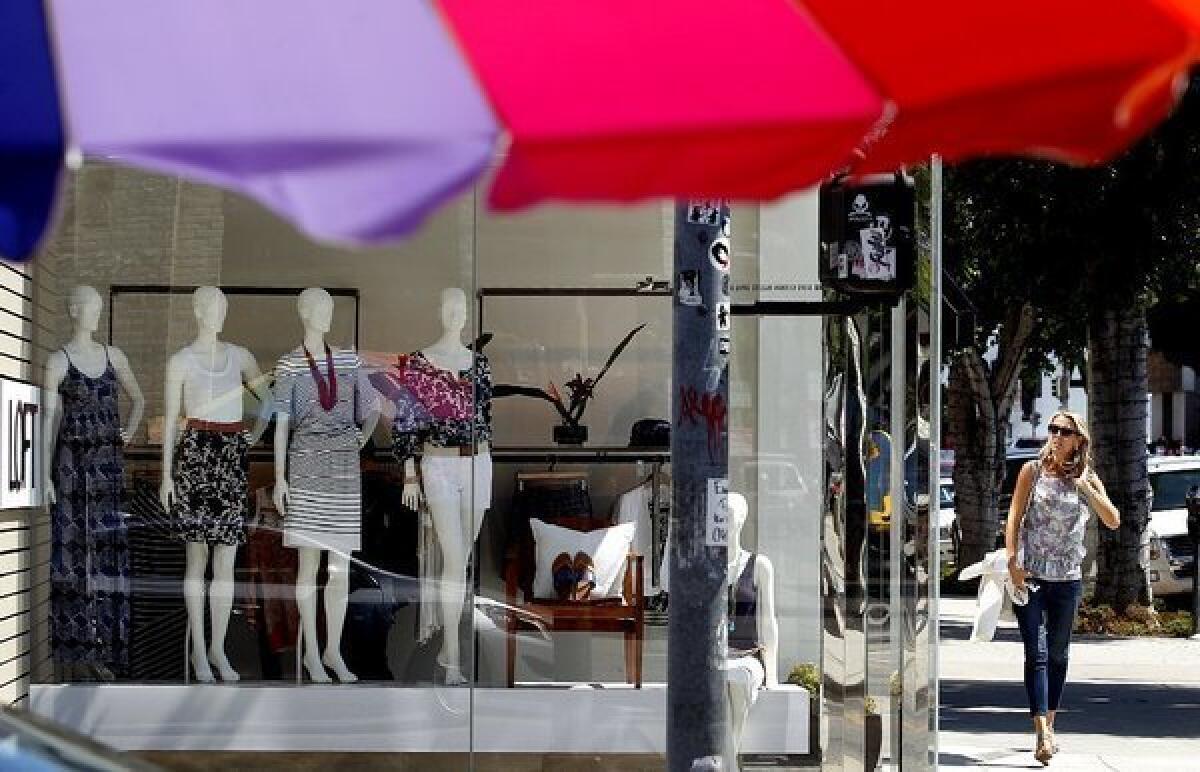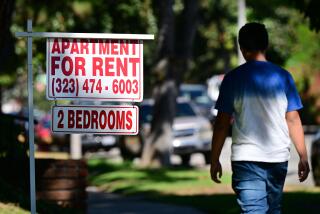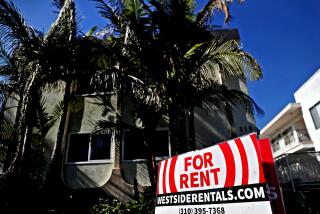Rents for shopkeepers in L.A head up again after years of decline

After surviving a brutal recession that saw many chain retailers, restaurants and shops struggle and even go under, Southern California landlords are regaining the upper hand in rent negotiations.
With shoppers willing to spend money again, signs of a retail revival in greater Los Angeles are starting to spread beyond destinations such as trendy Robertson Boulevard in West Hollywood and malls in Calabasas to once less popular areas such as downtown Long Beach as well as Echo Park and Highland Park in Los Angeles.
Owners of shopping centers and Main Street-style stores have finally stopped reducing rents and started raising them for the first time since 2008, a report said.
The slow but improving shift comes as merchants have regained their financial footing or expanded enough to stabilize the retail real estate market. Despite the continuing growth of online shopping, real estate analysts say they are seeing a modest comeback of traditional bricks-and-mortar stores — at least for the time being.
The turnabout is happening as empty storefronts left behind as casualties from the bleak years are being reclaimed and often spruced up. As a result, it’s getting harder for merchants to find cheap places to set up shop, said Ryan McCullough, a retail economist with CoStar Group Inc. “We have now had enough vacant space taken off the market that if retailers want to be here, they are paying a little bit more to get back in L.A.”
Among those expanding is retail giant Target, which recently opened stores near the Beverly Center, in Westwood and in downtown Los Angeles — three of eight smaller City Target stores it has opened in Southern California in the last three years.
“Southern California is a great market for Target, and we continue to consider new opportunities,” spokeswoman Ann Christensen said.
To be sure, retail rents are still nowhere near the peak in early 2008 when they averaged more than $31 per square foot per year in Los Angeles County and nearly $30 in Orange County.
Average asking rents in the first quarter of this year were $25.01 in L.A. County and $22.43 in Orange County. Both were still only a few cents up from their low point in late 2012. Those are averages for all retail property types, from humble food stands to top-end jewelers. The national average in the first quarter was $16.83.
Upscale malls and properties such as those found on Rodeo Drive came back soonest, McCullough said.
That’s because their stores cater to a wealthy clientele that took only a brief hiatus from shopping during the downturn, he said.
“The second it is OK to spend money again, they come back with a vengeance,” McCullough said. “Beverly Hills had a strong recovery.”
Business at tourist destinations including Hollywood and Anaheim followed, he said, and now the retail real estate comeback is across the board — even though it lacks much oomph.
“Nothing dramatic happened,” McCullough said. “This is the culmination of 2 1/2 years of slow recovery.”
Expensive homes | Southern California sales get outrageous
For landlords, it helps that Los Angeles County has seen little new retail property development in years, and even though it sometimes seems as if the region has a mini-mall on every other block, there is less retail space per resident in the area than in many other major markets.
Atlanta is the leader with 59 square feet of stores per resident, he said, and Charlotte, N.C., has 57. Los Angeles has 38 square feet per person and not much more in the pipeline.
With the recovery still moving slowly, McCullough said, “retail development is just dead.”
One reason there is slow growth in retail space is fear of the dramatic shift underway in people’s shopping habits, thanks to the Internet.
“There is a major sea change underway,” analyst Garrick H. Brown said in a report for real estate services company Cassidy Turley. “The fluctuations in consumer behavior that we saw over the past few years … will be dwarfed in the long-term by the changes engendered by the rise of e-commerce.”
Nevertheless, Brown said, many national retailers are planning to expand, according to a national survey his firm conducted. Not surprisingly, most of them are food-related businesses such as restaurants and purveyors of services that can’t be shipped in a box, such as spas and auto tune-up shops.
The Internet is a “game changer,” CoStar’s McCullough said, but successful traditional retailers are combining their online and in-person services. Macy’s, for example, uses its stores as distribution hubs for goods people order on the company website.
Online shopping means there will eventually be less demand for new stores, he said, “but as a whole we don’t see it as the end for bricks and mortar.”
ALSO:
Whole Foods to anchor new Playa Vista city center project
Midtown Shopping Center to see improvements after land sale
Skin-care firm Murad to move offices to another El Segundo site







